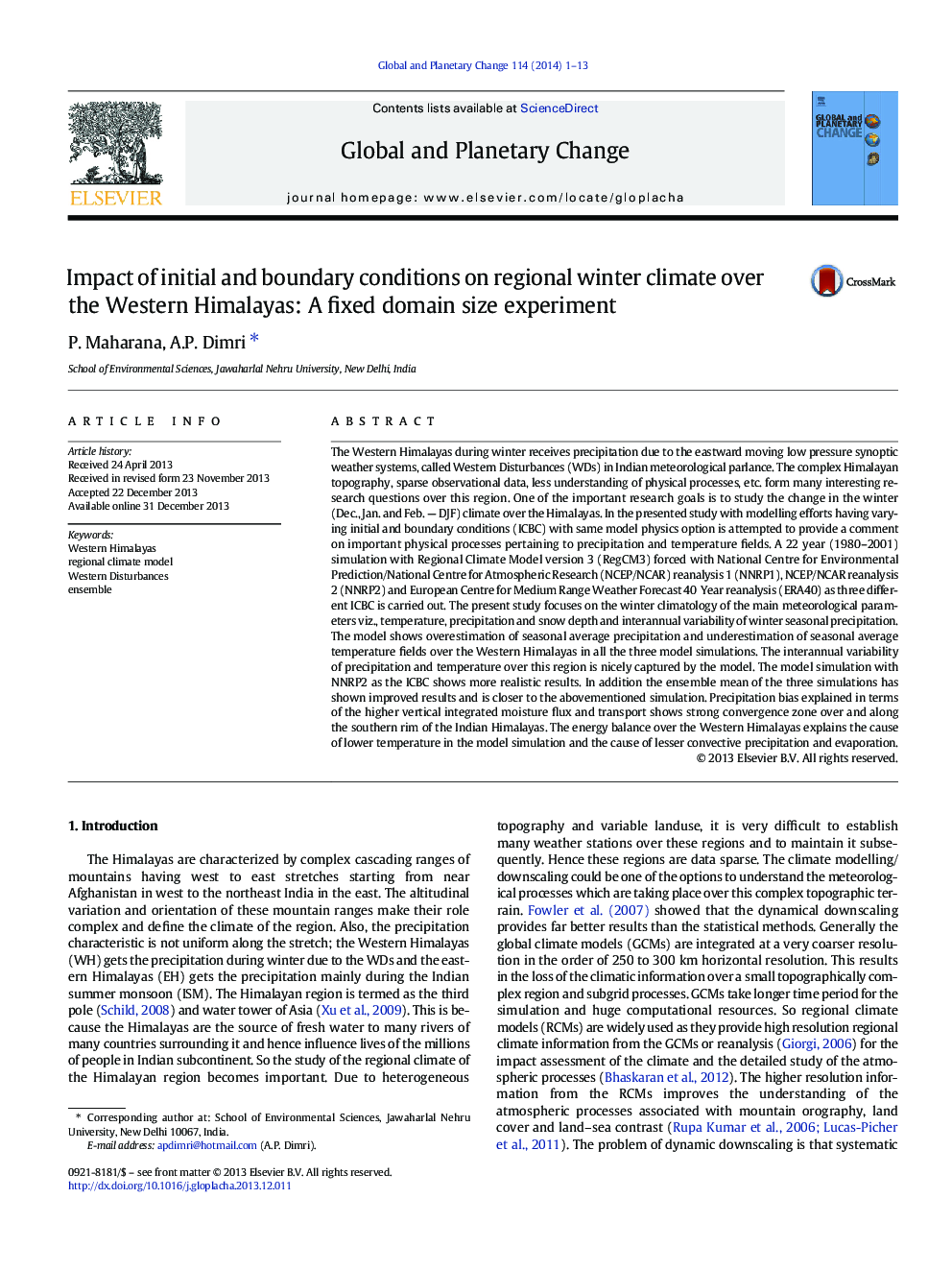| کد مقاله | کد نشریه | سال انتشار | مقاله انگلیسی | نسخه تمام متن |
|---|---|---|---|---|
| 4463448 | 1621667 | 2014 | 13 صفحه PDF | دانلود رایگان |
The Western Himalayas during winter receives precipitation due to the eastward moving low pressure synoptic weather systems, called Western Disturbances (WDs) in Indian meteorological parlance. The complex Himalayan topography, sparse observational data, less understanding of physical processes, etc. form many interesting research questions over this region. One of the important research goals is to study the change in the winter (Dec., Jan. and Feb. — DJF) climate over the Himalayas. In the presented study with modelling efforts having varying initial and boundary conditions (ICBC) with same model physics option is attempted to provide a comment on important physical processes pertaining to precipitation and temperature fields. A 22 year (1980–2001) simulation with Regional Climate Model version 3 (RegCM3) forced with National Centre for Environmental Prediction/National Centre for Atmospheric Research (NCEP/NCAR) reanalysis 1 (NNRP1), NCEP/NCAR reanalysis 2 (NNRP2) and European Centre for Medium Range Weather Forecast 40 Year reanalysis (ERA40) as three different ICBC is carried out. The present study focuses on the winter climatology of the main meteorological parameters viz., temperature, precipitation and snow depth and interannual variability of winter seasonal precipitation. The model shows overestimation of seasonal average precipitation and underestimation of seasonal average temperature fields over the Western Himalayas in all the three model simulations. The interannual variability of precipitation and temperature over this region is nicely captured by the model. The model simulation with NNRP2 as the ICBC shows more realistic results. In addition the ensemble mean of the three simulations has shown improved results and is closer to the abovementioned simulation. Precipitation bias explained in terms of the higher vertical integrated moisture flux and transport shows strong convergence zone over and along the southern rim of the Indian Himalayas. The energy balance over the Western Himalayas explains the cause of lower temperature in the model simulation and the cause of lesser convective precipitation and evaporation.
Journal: Global and Planetary Change - Volume 114, March 2014, Pages 1–13
